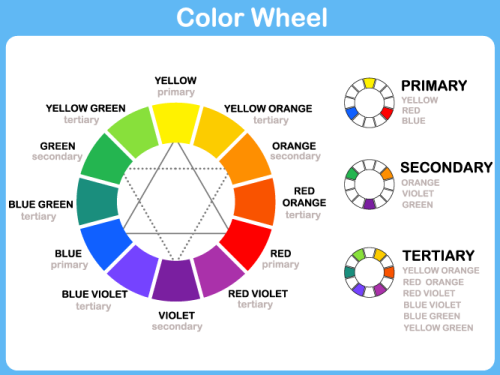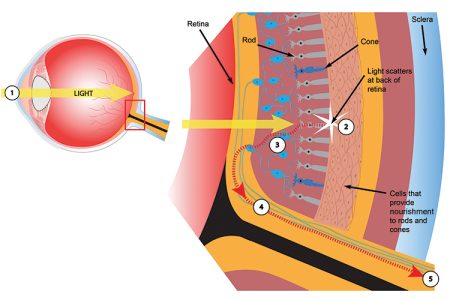Are You Colour Blind? How to Understand Colour
 Colour perception
Colour perception
There is a philosophy about colour, that no two people see a single colour the same. Colour perception actually alters depending on a wide variety of factors such as gender, ethnicity, health or geographical location (to name a few).
Understanding how colour vision works
 The retina is the layer on the inside back of the eye. When light passes through the eye and focuses on the retina, images are produced (sight). Within the retina, rods and cones exist. They are light sensitive nerve cells. Rod cells are highly sensitive to light and operate under dim lighting conditions. There are three types of cone cells. They function under ambient and bright lighting conditions, exhibit rapid responses to variations in light intensity, and are responsible for color vision and high visual acuity.
The retina is the layer on the inside back of the eye. When light passes through the eye and focuses on the retina, images are produced (sight). Within the retina, rods and cones exist. They are light sensitive nerve cells. Rod cells are highly sensitive to light and operate under dim lighting conditions. There are three types of cone cells. They function under ambient and bright lighting conditions, exhibit rapid responses to variations in light intensity, and are responsible for color vision and high visual acuity.
So, what is the cause of CVD (colour vision deficiency)?
The exact cause of colour blindness, aka CVD, continues to be researched but we know on a basic level that it is caused by a genetic mutation which is then passed down through blood generations. ‘Faulty’ electrical signals are sent to the brain or physical/chemical damage to the eye could also cause colour distortion.
We mentioned earlier that there are three types of cone cells. Each type has a different sensitivity to light wavelengths. One type perceives red light, another blue and the third green. When all three work as intended, we have ‘normal vision’. CVD occurs when one of the cones is faulty or does not exist at all. Whichever colour type is faulty or non existent, is the type that you are deficient in. Non-existence of one of these cones results in a more severe degree of CVD.
Red/green colour vision deficiency occurs in 99% of people diagnosed, making it the most common.
CVD is much more common in males
 1 in 12 males (8%) are colour blind vs 1 in 200 females (0.5%).
1 in 12 males (8%) are colour blind vs 1 in 200 females (0.5%).
A colour blind female is only born when her father is colour blind and her mother is a carrier (grandfather is colour blind).
Types of CVD
 Protanopia
Protanopia
Unable to perceive red light.
 Deuteranopia
Deuteranopia
Unable to perceive green light.
 Tritanopia
Tritanopia
Unable to perceive blue light.
 Achromatopsia
Achromatopsia
Completely colour blind seeing only shades of gray and black and white.
How do colour blind glasses work?
 It is possible to change the vision of a person with CVD through glasses that are made with certain minerals. These minerals absorb and filter out some of the wavelengths between red and green that could confuse the brain. These glasses can not provide a true representation of natural colour vision and experiences can vary widely amongst individuals.
It is possible to change the vision of a person with CVD through glasses that are made with certain minerals. These minerals absorb and filter out some of the wavelengths between red and green that could confuse the brain. These glasses can not provide a true representation of natural colour vision and experiences can vary widely amongst individuals.
Some of the light coming through the glasses is blocked so that the remaining green and red light wavelengths don’t overlap as much. With less colour overlap, the brain gets a clearer signal to help distinguish between the problem colours. Colour blindness correcting glasses will not change colour perception for people whose deficiency is caused by a complete absence of red or green photoreceptors.
Follow us
Guide for Choosing The Best Laser Eye Clinic
Misleading Laser Eye Surgery Claims
Can I Go Blind from LASIK or SMILE?
My Review: Blue Light Blocking Glasses
Sources
https://www.colourblindawareness.org/colour-blindness/causes-of-colour-blindness/
https://www.ncbi.nlm.nih.gov/pmc/articles/PMC4712787/#:~:text=Rod%20cells%20are%20highly%20sensitive,vision%20and%20high%20visual%20acuity.
https://www.aao.org/eye-health/tips-prevention/do-color-blindness-correcting-glasses-work#:~:text=According%20to%20Dr.,distinguish%20between%20the%20problem%20colors.




